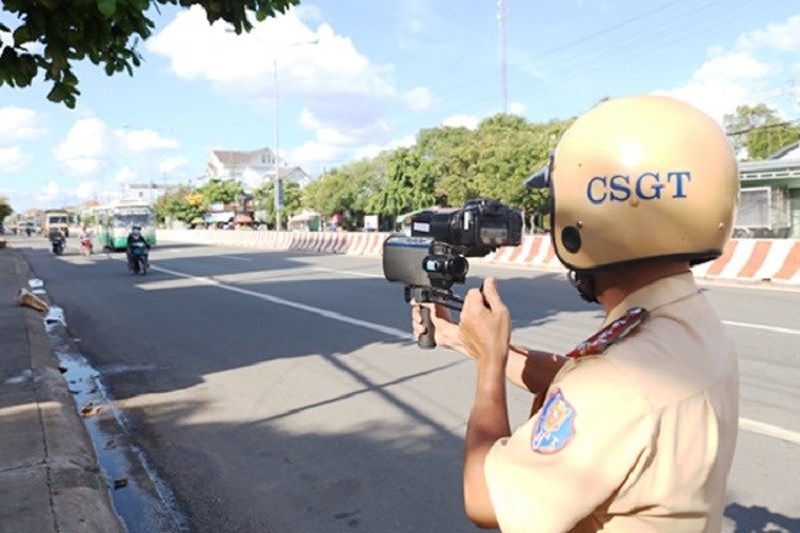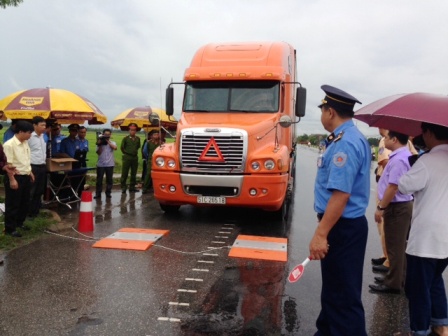Vietnam: Process for vehicle weighing and use of weighing results achieved from dual-mode weighing system available at vehicle weigh stations
This is one of the fundamental contents specified in Circular No. 06/2017/TT-BGTVT of the Ministry of Transport of Vietnam, which was issued on February 02, 2017.

Process for vehicle weighing and use of weighing results achieved from dual-mode weighing system available at vehicle weigh stations is specified as follows:
1. Primary weighing process
- When reaching a vehicle weigh station, a vehicle of which inspection of weight is required must comply with instructions given by road signs or employees in charge of traffic direction and control, and run along the right lane or road section intended for its use before weight and dimension inspection carried out by the weighing equipment item; if there are a number of vehicles in need of weight inspection, they are required to enter one after another into the weighing area in order to avoid the risk of falsifying the weighing result;
- The weighing system will automatically detect the vehicle plate number, identify technical parameters of the vehicle, measure vehicle weight and dimension and finally give the weighing result. If it is established that there is no sign of violation, that vehicle is allowed to continue their journey as normal. If there is any sign of violation, the secondary weighing process will be required.
2. Secondary weighing process
- When the primary weighing system detects and determines which vehicle is suspected of any violation, it will give an automatic alert and the user of that system will command the vehicle in question to change to a particular lane in order for the secondary weighing activity to happen to inspect its weight and dimension;
- The law enforcement force will request the driver to present documents related to his/her driving license and vehicle registration, verify them and then transfer them to the user of weighing system to enter necessary information in the weight slip stored in the computer; provide the driver with instructions about driving speed, measuring position and give commands in order for the driver to drive his/her vehicle in position for secondary weighing activity; if there is any likely violation, the vehicle will follow instructions to run into the violation-handling position.
3. The user of the weighing system shall print and sign his/her name in the vehicle weight slip and then give it to the law enforcement force to issue a penalty charge notice; delivery and receipt of the weight slip will be recorded in the logbook and validated by required signatures.
4. The law enforcement force receives the vehicle weight slip and imposes an administrative penalty for a violation that may arise in accordance with applicable laws and regulations.
5. After issuing an administrative penalty charge notice in accordance with applicable laws and regulations, the law enforcement force will order the driver or vehicle owner to reduce a portion of cargos in excess of statutory load limits or unload a portion of cargo in excess of statutory dimension limits; in case a vehicle carries an overmass or oversized freight, but it fails to meet regulations on allowed weight and dimension limits, the law enforcement force will command the driver or vehicle owner to replace another vehicle that conforms to the stipulated weight and dimension.
Circular No. 06/2017/TT-BGTVT of the Ministry of Transport of Vietnam takes effect from May 01, 2017.
- Key word:
- Circular No. 06/2017/TT-BGTVT
- Number of deputy directors of departments in Vietnam in accordance with Decree 45/2025/ND-CP
- Cases ineligible for pardon in Vietnam in 2025
- Decree 50/2025 amending Decree 151/2017 on the management of public assets in Vietnam
- Circular 07/2025 amending Circular 02/2022 on the Law on Environmental Protection in Vietnam
- Adjustment to the organizational structure of the Ministry of Health of Vietnam: Certain agencies are no longer listed in the organizational structure
- Vietnam aims to welcome 22-23 million international tourists in Vietnam in 2025
-

- Vietnam: Use of results achieved from technical ...
- 14:13, 06/06/2017
-

- Vietnam: Process for vehicle weighing and use ...
- 14:17, 12/05/2017
-
- Vietnam: Vehicle weight inspection datasheet and ...
- 14:05, 04/04/2017
-

- Vietnam: Requirements concerning technical and ...
- 13:58, 03/03/2017
-

- Notable new policies of Vietnam effective as of ...
- 16:26, 11/04/2025
-
.Medium.png)
- Notable documents of Vietnam in the previous week ...
- 16:21, 11/04/2025
-
.Medium.png)
- Notable documents of Vietnam in the previous week ...
- 16:11, 02/04/2025
-
.Medium.png)
- Notable new policies of Vietnam to be effective ...
- 16:04, 02/04/2025
-
.Medium.png)
- Notable new policies of Vietnam effective from ...
- 14:51, 21/03/2025
 Article table of contents
Article table of contents

